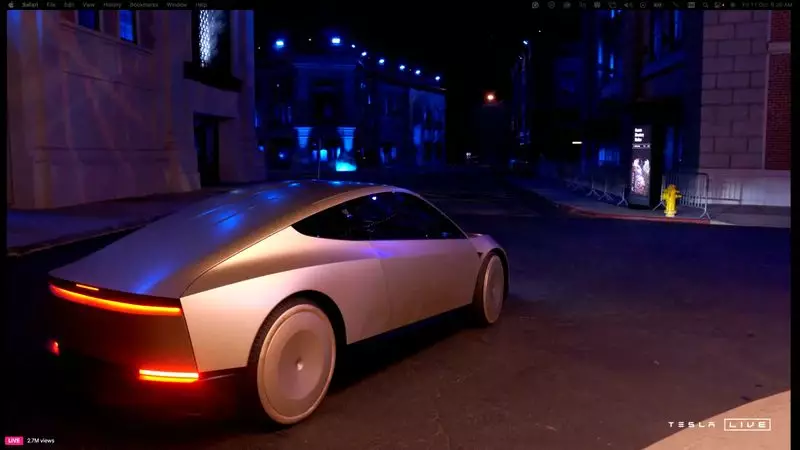The unveiling of Tesla’s much-anticipated “Cybercab” by CEO Elon Musk marked a pivotal moment in the realm of autonomous transportation. This ambitious introduction aimed to redefine the conventional car ownership model by presenting a robotaxi devoid of traditional controls like steering wheels and pedals. Instead, it hosts two distinctive gull-wing doors, signaling a futuristic vision that Musk believes could revolutionize the transportation landscape. However, while the concept promises accessibility and affordability, a comprehensive analysis reveals significant hurdles that Tesla may need to navigate.
A New Era of Transportation Technology
Musk’s presentation at the Warner Bros studio was not merely a product reveal; it was an assertion of Tesla’s identity as an AI and robotics pioneer, distinct from traditional automakers. Announcing a production date of 2026, Musk stated that these robotaxis would be priced below $30,000 and operate at a cost-efficient 20 cents per mile. The essence of Musk’s argument rests on the observation that cars are parked most of the time, and if made autonomous, they could serve multiple users—potentially increasing utilization rates significantly. However, this leads to the pivotal question: are we ready for such a fundamental shift in transportation and societal habits?
Social media buzz and excitement surrounded the event, as Tesla enthusiasts speculated about innovations and hailed the company’s vision. Nevertheless, skepticism remains among investors and analysts, escalating concerns over the feasibility of such technology. Experts highlighted legitimate challenges related to advanced automation systems and the economic viability of deploying a fleet of self-driving taxis. Furthermore, the harmful backdrop of missed deadlines and unfulfilled promises from earlier projections casts a long shadow over Musk’s assurances.
Given Tesla’s current situation, where the company might experience its first decline in deliveries, faith in sustaining rapid growth wanes. The ongoing financial strain—coupled with decreasing demand amid steep price reductions—has led experts to urge Musk to exhaustively demonstrate a working prototype and a robust plan for future growth.
In an environment where established players like Waymo already utilize uncrewed robotaxis in select urban regions, Musk faces the challenge of not just catching up but striving to outperform them. The landscape is dotted with emerging competitors, such as General Motors’ Cruise and Amazon’s Zoox, all seeking to carve their niches in the evolving robotaxi industry. Many of these competitors have endured substantial losses due to the high costs associated with the technology, including lidar systems. In contrast, Musk’s strategy appears to lean heavily on artificial intelligence and cameras—indicative of a pragmatic approach to cost management. Yet, the efficacy of Tesla’s Full Self-Driving (FSD) system remains a point of contention given its dependency on driver oversight and prior incidents that have brought regulatory scrutiny.
The Road Ahead: Potential and Pitfalls
The challenges posed by regulatory frameworks, public perception, and technological complexities are vast. Innovations like robotaxis will not simply reshape transportation; they will also invoke profound changes in societal structure and urban planning. Adapting to a world where mobility is shared could lead to reduced car ownership, shifts in real estate dynamics, and increased reliance on app-based services. Nevertheless, the transition necessitates building trust not only in the technology but also in the companies behind it.
Musk must therefore strategize meticulously, encompassing the production speed, cost implications, and revenue generation of Tesla’s robotaxi service. He must confront the reality that investing heavily in R&D does not automatically yield successful products, particularly when market acceptance and regulatory approval hang precariously in the balance.
While the unveiling of the Cybercab embodies an innovative step toward an autonomous future, it remains imperative to temper enthusiasm with critical realism. The hurdles Tesla faces are noteworthy—across technological, market, and regulatory spectrums. Musk’s ambitious vision for a fleet of robotaxis that reshape urban transport offers tantalizing potential, but ultimately, the pathway to that reality is fraught with challenges that will test Tesla’s limits and the resilience of its innovation strategies. The question remains: can Tesla overcome these obstacles and truly usher in the era of autonomous ride-sharing, or will the dream of the robotaxi remain a tantalizing vision just beyond reach?

